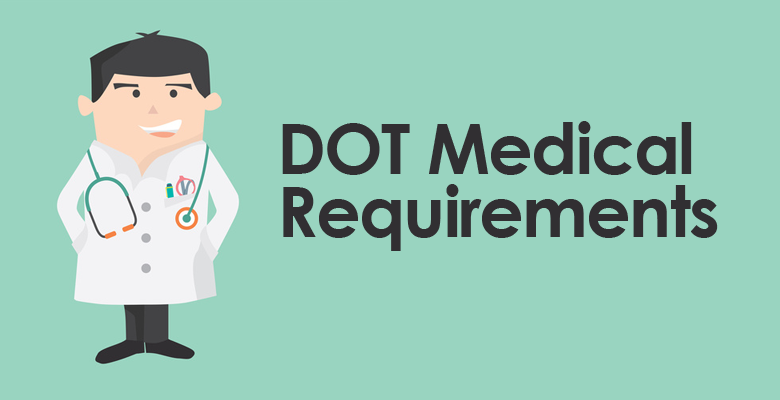DOT Physical Visit Requirements
Driving requires sound health and robust mind. If you are cherishing the dream of becoming an intestate or intrastate commercial motor vehicle driver, you should meet some physical requirements. They are set by The Federal Motor Carrier Safety Administration (FMCSA)– the governing body to distribute licenses.
Read the following points to learn the criterions-
Cardiac Health
When you are preparing for DOT physical visit, remember that your cardiac health should demonstrate no recent cardiovascular ailments like- heart blockage or collapse.
In case you have had your share of heart failure in the past, do bring the all-clear certificate from your physician. If it’s satisfactory, then FMCSA might allow you to drive with the provision of an annual check-up.
Blood Pressure
Blood pressure has two spectrums- systolic and diastolic. While the latter hangs in the bottom level of spectrum, the former is considered to be the peak stage of BP. While you are planning to apply for CDL, keep note that in order to be granted 2-years license, you must possess- systolic <140 and diastolic=90 or <. So ideal BP should be under 140/90.
On the off chance that you are suffering from hypertension then stage 1 will allow you for 1-year driving permit. Stage II would render 3-months certification. But when it touches to stage III- you will be disqualified according to the new stringent rule of FMCSA.
Hearing Ability
Each of us has an ear with better hearing ability than the other ear. In DOT physical visit requirements you need to pass a ‘whisper’ examination, not farther than 5 feet from your stronger ear. In the event that the examiner uses audiometric equipment, the driver has to have the hearing capacity not lesser than 40 decibels at frequency ranging from 500-2000 Hz.
You might possibly wear hearing aid here. But for the latter, the FMCSA medical panel needs to approve your device.
Sleep Apnea
Sleep Apnea is a sleeping disorder that is controlled by disrupted breathing. It is accompanied by snoring, nausea and morning dizziness. The drivers with potential sleep disorder show tendency to fall asleep while driving- thus leading to an accident.
Sleep Apnea is of 3 types- mild, medium and moderate. On the off chance that your ‘issue’ falls under the mild category, then you are qualified to drive CMV. Then again in case, it lies somewhere between medium-to-severe, the medical board won’t allow you CDL (Commercial Driver’s License).
Diabetes-In-Check
In case you have diabetes, then you need to submit the diabetic history and medicinal report for last 6 months amidst physical visit. On the off chance you are on insulin injection, you won’t be licensed by FMCSA. What’s the most significant point to put forth in diabetic report? Your Hemoglobin AIC must not exceed the threshold of 10%.
Apart from low glycosylated hemoglobin, a potential driver with diabetes should not have incidents of seizure, organ failure, and stroke, kidney damage and so on. With a clean diabetic record, you may be granted with up to 1-year of license.
Vision
The most critical part of ‘fitting the bill’, to become a commercial motor vehicle driver is – a strong vision of 20/40. This is applicable for both eyes. You may wear glasses/contact lenses during the examination procedure or remain without them.
Aside from clear eyesight, recognizing the traffic lighting (amber, red, and green) is another moot point for passing the driving test set. Also, the doctor will give you an eye chart to read- from 20 feet away.
Apart from the above prerequisites- blood sugar, various usage of medication, and history of substance use/alcohol consumptions are other criterions a potential driver has to encounter. Before you go for the physical visit, read along the guidelines of FMCSA completely, and consult with your physician.

